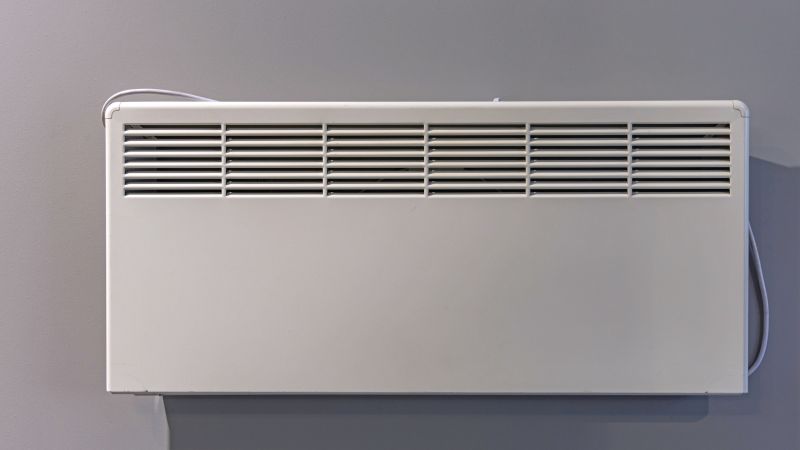Leading Products for Wall Heating Installation You Can Trust
Browse through top-rated options that combine durability, efficiency, and ease of installation for your wall heating needs.
 Wall heating installations offer a versatile and space-efficient method for providing consistent warmth within indoor environments. These systems can be integrated into various wall types, including drywall, masonry, or paneling, making them suitable for both residential and commercial applications. When selecting products for wall heating, it is important to consider the compatibility with existing wall structures, ease of installation, and the capacity to deliver even heat distribution. Electric and hydronic systems are common options, each with their own installation requirements and operational considerations.
Wall heating installations offer a versatile and space-efficient method for providing consistent warmth within indoor environments. These systems can be integrated into various wall types, including drywall, masonry, or paneling, making them suitable for both residential and commercial applications. When selecting products for wall heating, it is important to consider the compatibility with existing wall structures, ease of installation, and the capacity to deliver even heat distribution. Electric and hydronic systems are common options, each with their own installation requirements and operational considerations.
Top Overall Option
Electric Wall Heating Panel
An electric wall heating panel designed for easy installation and efficient heat distribution. It features adjustable thermostats and safety features to provide reliable comfort in various indoor settings. Its slim profile allows it to blend seamlessly into wall surfaces, making it suitable for both new constructions and retrofit projects.
Types of Products For Wall Heating Installations
Electric Wall Heating Panels
Thin, easy-to-install panels that heat rooms quickly with minimal setup. Ideal for retrofit and space-constrained environments.
Hydronic Wall Radiators
Water-based systems that offer consistent warmth through piping embedded in walls, suitable for larger spaces.
Infrared Wall Heaters
Emit infrared radiation to directly heat objects and occupants, providing immediate warmth with energy-efficient operation.
Mounted Electric Baseboard Heaters
Wall-mounted units that run along the base of walls, offering flexible placement options for even heat distribution.
Convection Wall Heaters
Use convection currents to circulate warm air within a room, often integrated with wall-mounted panels.
Panel Radiators
Decorative wall-mounted radiators that combine aesthetics with efficient heat delivery.
Ceramic Wall Heaters
Utilize ceramic elements for rapid heating and durability, suitable for various wall installations.
Oil-Filled Wall Heaters
Provide steady warmth by heating oil contained within sealed panels, often used for supplemental heating.
Infrared Panel Heaters
Thin panels that emit infrared heat directly to objects and people, suitable for targeted heating.
Electric Curtain Heaters
Mounted behind curtains or drapes to prevent heat loss and improve room insulation.
Hybrid Wall Heating Systems
Combine electric and hydronic technologies for versatile and efficient heating solutions.
Smart Wall Heaters
Feature Wi-Fi connectivity and programmable controls for remote operation and scheduling.
Popular Choices
Widely used for their ease of installation and quick heat response, these panels are frequently chosen for various indoor spaces.
Known for providing direct warmth, infrared heaters are trending due to their energy efficiency and instant heat delivery.
Popular in larger or colder environments, these systems offer consistent and comfortable heating through water circulation.
Increasingly favored for their connectivity and programmable features, allowing for customized heating schedules.
Flexible and space-efficient, these units are common choices for supplemental heating needs.
Appreciated for their rapid heating capabilities and durability, suitable for various room sizes.
Popular for their ability to evenly distribute warm air within a space, often integrated into wall panels.
Chosen for their steady, long-lasting warmth, especially in colder climates or for supplementary use.
Favored for targeted heating and energy efficiency, suitable for both residential and commercial spaces.
Versatile wall-mounted units that can be customized for various room layouts and heating needs.
Electric wall heating panels are often praised for their straightforward installation process and quick response times. They can be mounted directly onto walls and connected to standard electrical circuits, making them a popular choice for retrofit projects. Hydronic systems, on the other hand, involve piping that circulates heated water through wall-mounted panels or radiators. These systems typically require more complex installation but can offer consistent heat over larger areas.
In addition to the core heating elements, accessories such as thermostats, control panels, and mounting brackets are essential for optimal operation and user convenience. Selecting products with adjustable settings and reliable controls can enhance comfort and energy management. It is also advisable to evaluate the safety features, such as overheat protection and durable materials, to ensure long-term performance. Proper installation and maintenance are key to maximizing the effectiveness of wall heating products and ensuring safety within indoor spaces.
Key Buying Considerations
- Compatibility with existing wall structures and available space.
- Type of heating technology suitable for your needs, such as electric, hydronic, or infrared.
- Ease of installation, especially for retrofit projects.
- Thermostat and control options for precise temperature regulation.
- Safety features including overheat protection and durable materials.
- Energy efficiency ratings and operational costs.
- Aesthetic integration with room decor and wall surfaces.
- Size and heating capacity appropriate for the intended space.
- Availability of customization options like adjustable settings or programmable timers.
- Warranty and manufacturer support for long-term reliability.
- Ease of access for maintenance and cleaning.
- Compatibility with existing electrical systems or plumbing.
- User reviews and feedback on performance and durability.
- Additional features such as Wi-Fi connectivity or remote control capabilities.
- Cost considerations relative to features and quality.
